- Books Name
- Class-8 Science Book
- Publication
- PathSet Publications
- Course
- CBSE Class 8
- Subject
- Science
Coal
What are Resources?
Materials which are useful for us are called Resources
Example - Air, Water, Human Beings, Coal, Petroleum are all resources
Resources are either Natural or Man-made
What are Natural and Man-Made Resources?
Resources provided by nature are called Natural resources.
Example - Air, Water, Petroleum, Coal
Resources made by Human beings are called Man-made Resources
Example – Machines, Vehicles, Roads
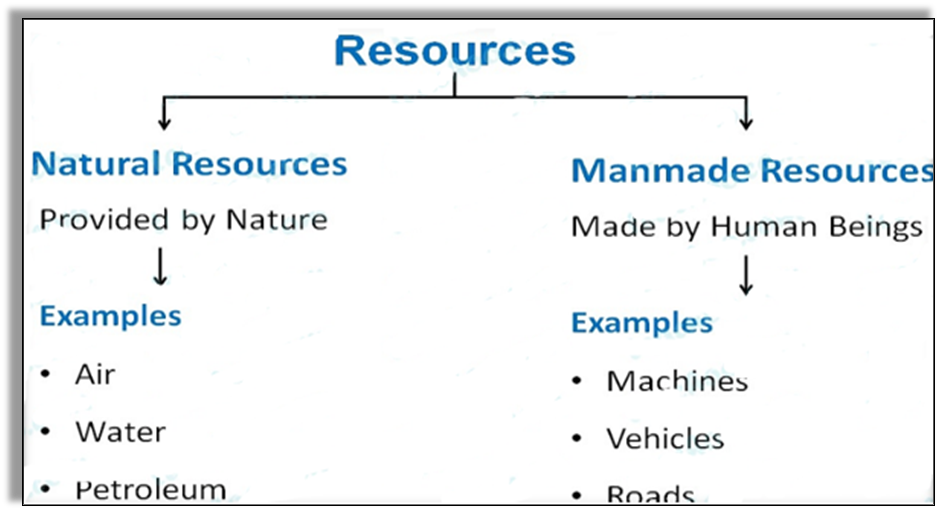
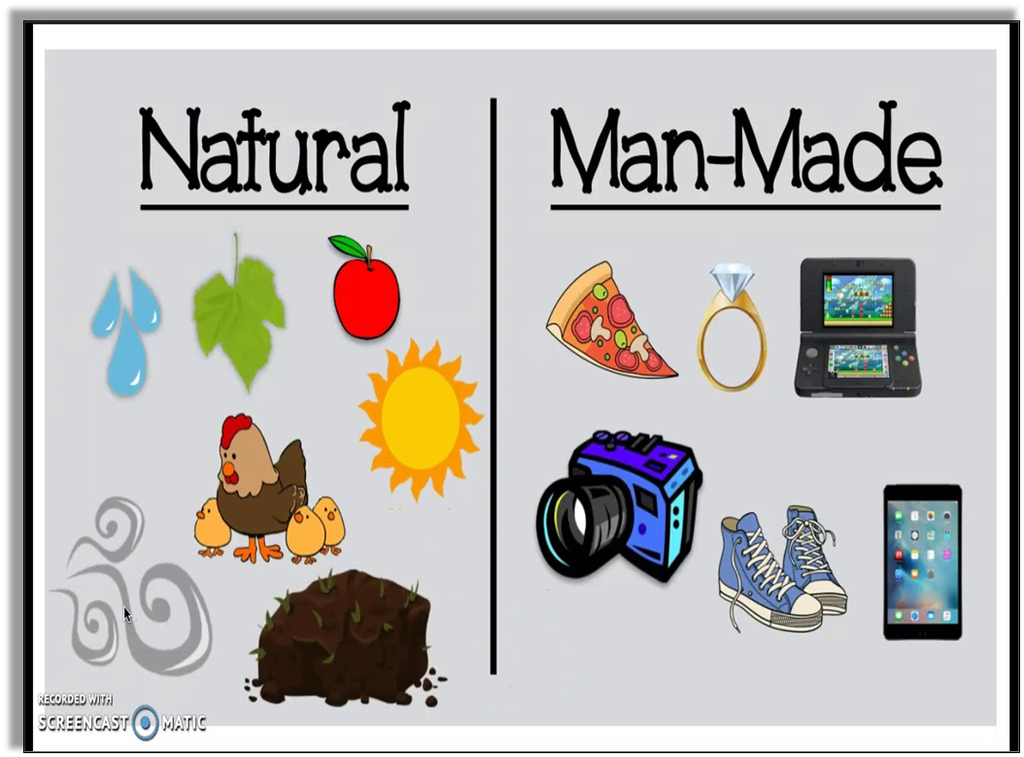

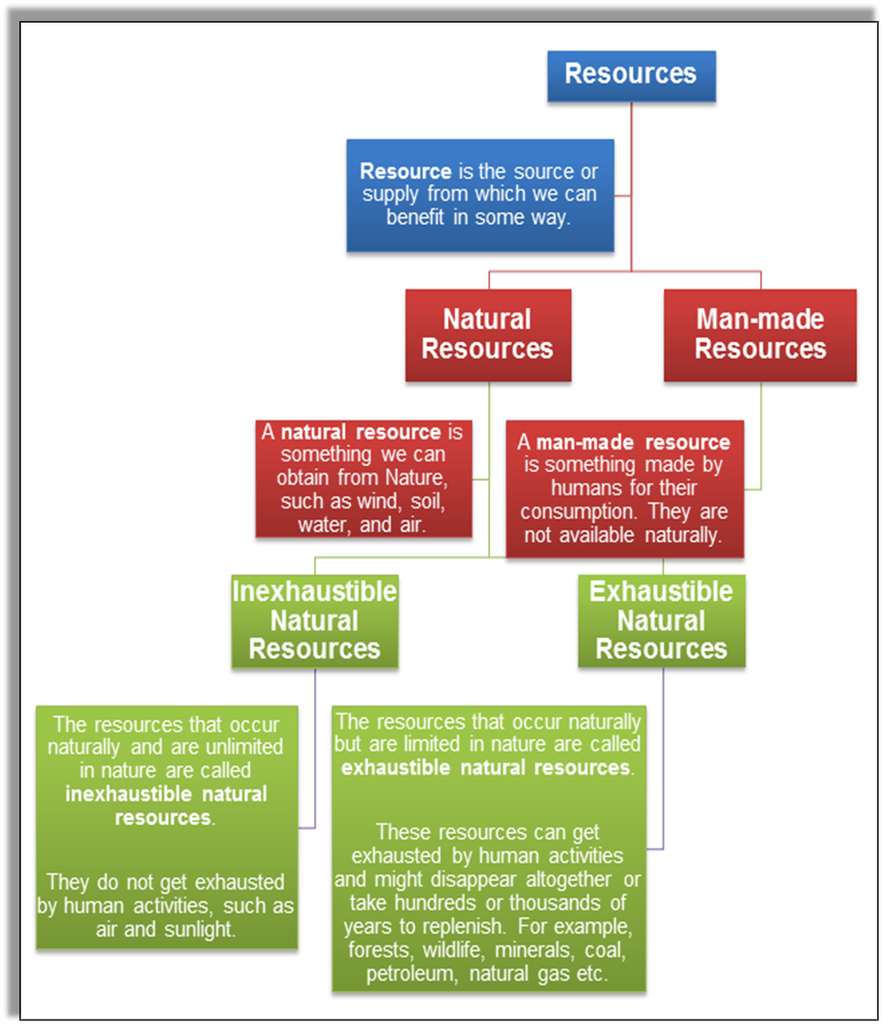
Natural Resources
- Coal, petroleum, and natural gas which are formed from the dead remains of living organisms are called fossil fuels.
- Coal is used to produce electricity in thermal power plants and to run steam engines. It is obtained from coal mines.
- The slow process of conversion of dead vegetation into coal is called Carbonization.
- Petroleum is a dark oily liquid with an unpleasant smell. It is made up of several carbon compounds called fractions such as petrol, fuel oil, naphtha, and diesel and petroleum gas.
- The process of separation of petroleum into its constituents or fractions is called refining. It is carried out in an oil refinery.
- Natural gas is obtained along with petroleum. It is a clean fuel that can be directly used.
- Natural gas is stored under high pressure as CNG. It can be supplied directly to homes through pipelines. It is used as a starting material in the preparation of many chemicals and fertilizers.
Types of Natural Resources
1. Renewable Resources:
The resources that can be repetitively used and can be replenished naturally are called renewable resources. Example: solar energy, wind energy.
2. Non-Renewable Resources:
The resources that can be replenished very slowly or cannot be replenished at all are known as non-renewable resources. Example: Coal, petrol, diesel. Coal, Petroleum and Natural Gas are exhaustible natural resources. They are fossil fuels. Fossil fuels are fuels that are formed by fossils (or dead remains) of living organisms.
What are Fuels?
A fuel is any substance that releases large amounts of energy in the form of heat and light when it is burned. For example, coal and petroleum are fuels.
Fuels can be classified as:
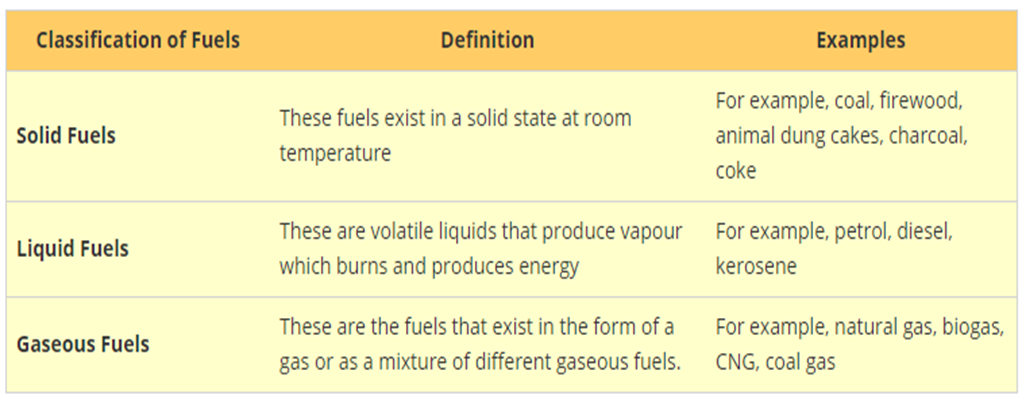
Why do we need fossil fuels?
Fuels are required for different purposes such as:
- Transportation: fuels are used to run different vehicles such as cars, trucks, motorcycles, trains, airplanes etc.
- Cooking: fuels are needed for cooking. For instance, LPG is used in urban areas while firewood, coal and cattle dung is used in rural areas.
- Heating: fuel is also used to generate heat
- Electricity production: different fuels such as coal, petrol, natural gas and diesel are used to generate electricity in power plants
- Industrial usage: many industries use fuels for different purposes such as producing electricity, running their machinery and heating
- Rockets and other space vehicles: fuels called propellants are used in rockets that help in launching the space vehicles
What are the characteristics of a good fuel?
The characteristics of good fuel are:
- It should be economical.
- It should be available easily
- It should not emit poisonous gases on burning
- It should produce large amounts of heat with respect to its mass (it should have a high calorific value)
- It should be easy to transport and handle
- It should not produce a bad odour
- It should be clean and should not produce any ashes
- It should not ignite easily at room temperature
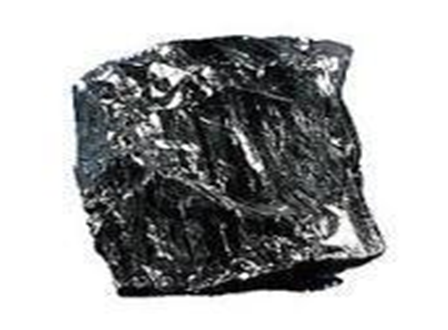
Coal is a fossil fuel formed from dead plant matter over millions of years due to heat and pressure.
How is Coal Formed?
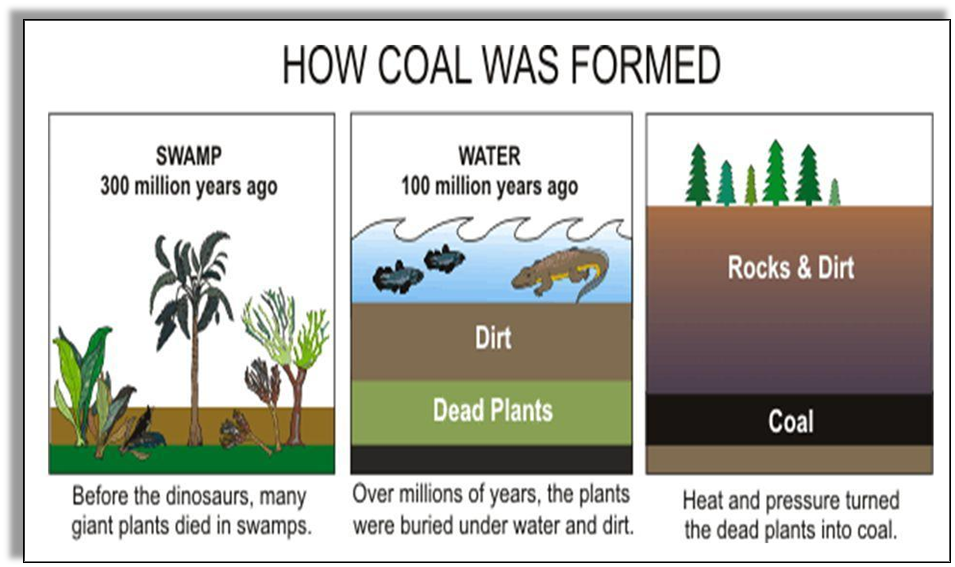
- Over millions of years, coal is formed through different biological and geological processes on dead and decaying plant matter.
- Coal mainly contains carbon. The process of conversion of dead vegetation into coal is called carbonization.
- Coal comes from a coal mine.
What is the composition of coal?
Coal consists of hydrogen, carbon and oxygen and Sulphur (small amount).
What is coal mining?
Coal is extracted from the ground with a process called mining. Coal Mining can be of two types:
- Opencast Mining: Mining in which coal is extracted from near the earth’s surface
- Underground Mining: Mining in which coal is extracted from deep inside the earth’s crust
Different Types of Coal:
As coal gets older, the carbon content in it is higher. When coal is burnt, it mainly produces carbon dioxide gas.
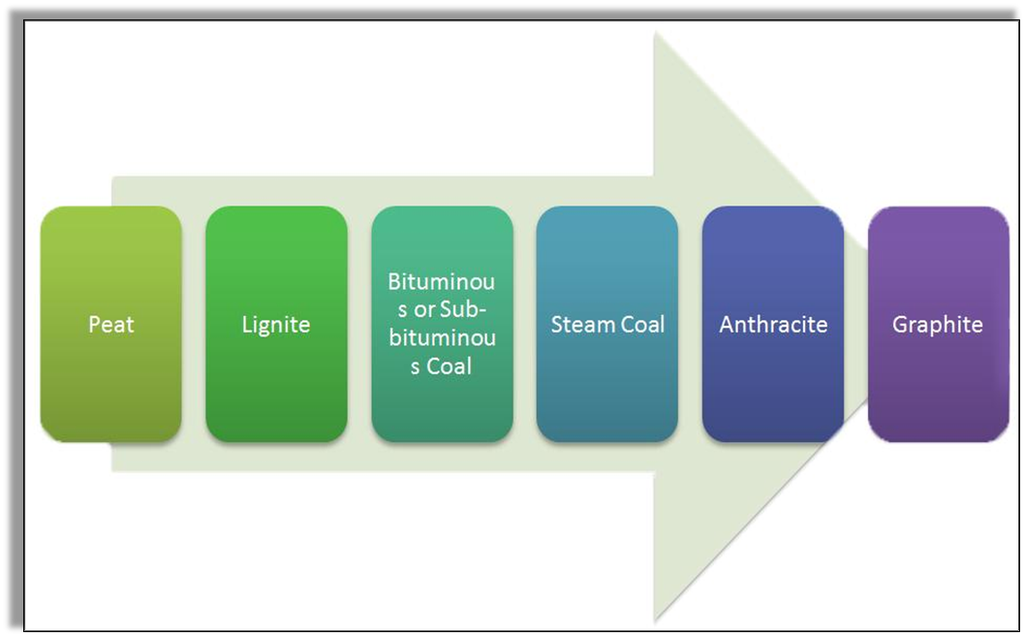
Uses of Coal
- Used as fuel to cook food.
- Used in thermal power plants to produce electricity.
- Used as fuel in various industries.
- Once used as fuel to run steam-powered railway engines.
When processed, coal yields coke, coal tar and coal gas which in turn is used by many industries.
What is destructive distillation?
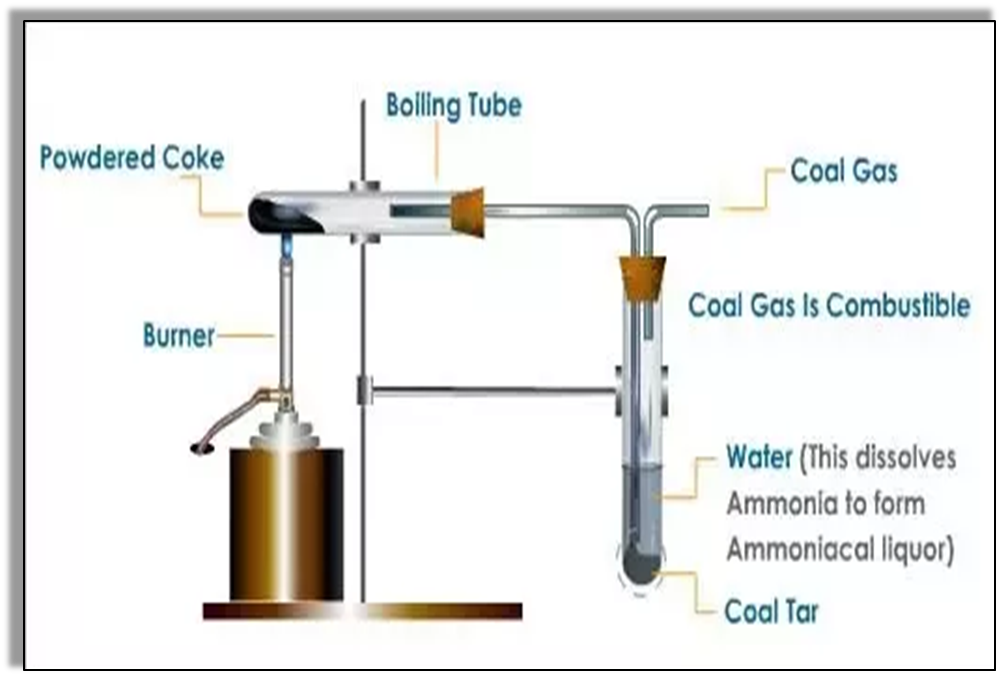
It is a process in which coal is heated at a very high temperature in the absence of air to obtain various useful products from it. Consider the diagram below to understand the process of destructive distillation. Different products obtained through this process are coal gas, coal tar, coke and liquor ammonia
Destructive Distillation Process Flow Chart
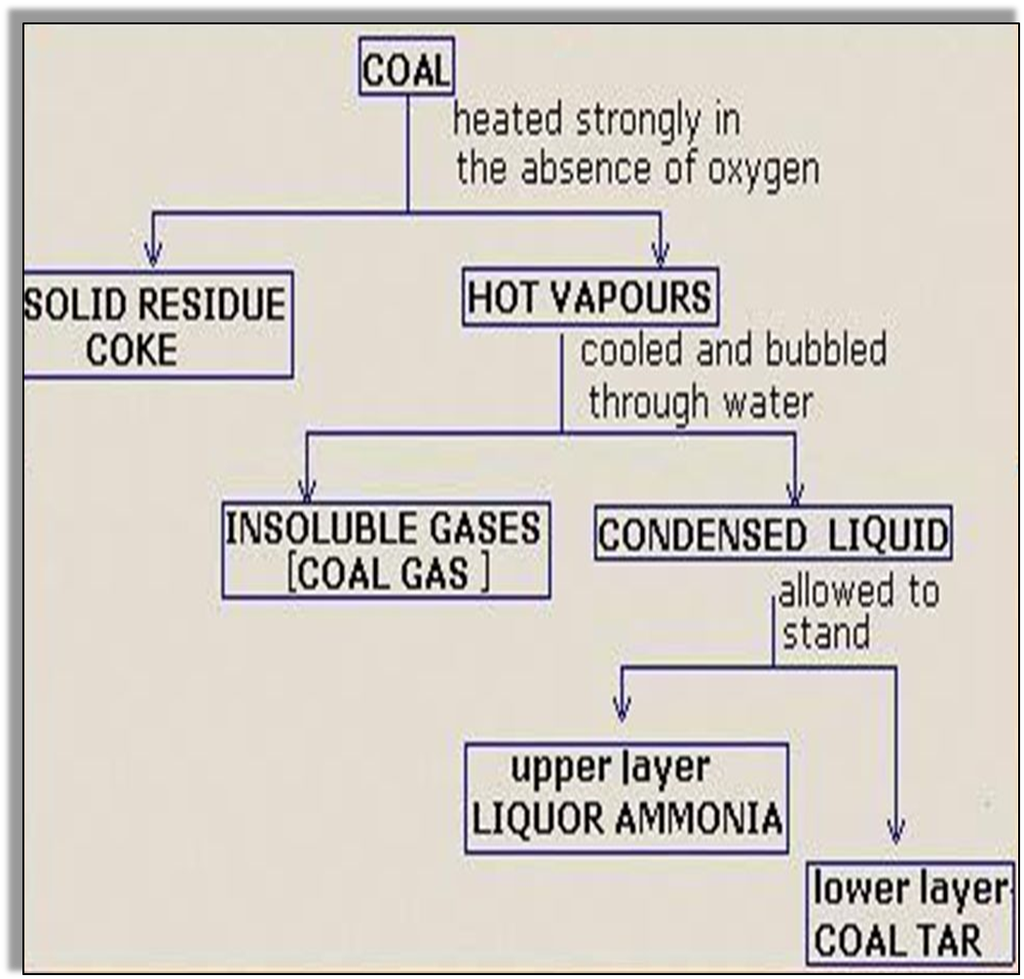
Major Coal Products
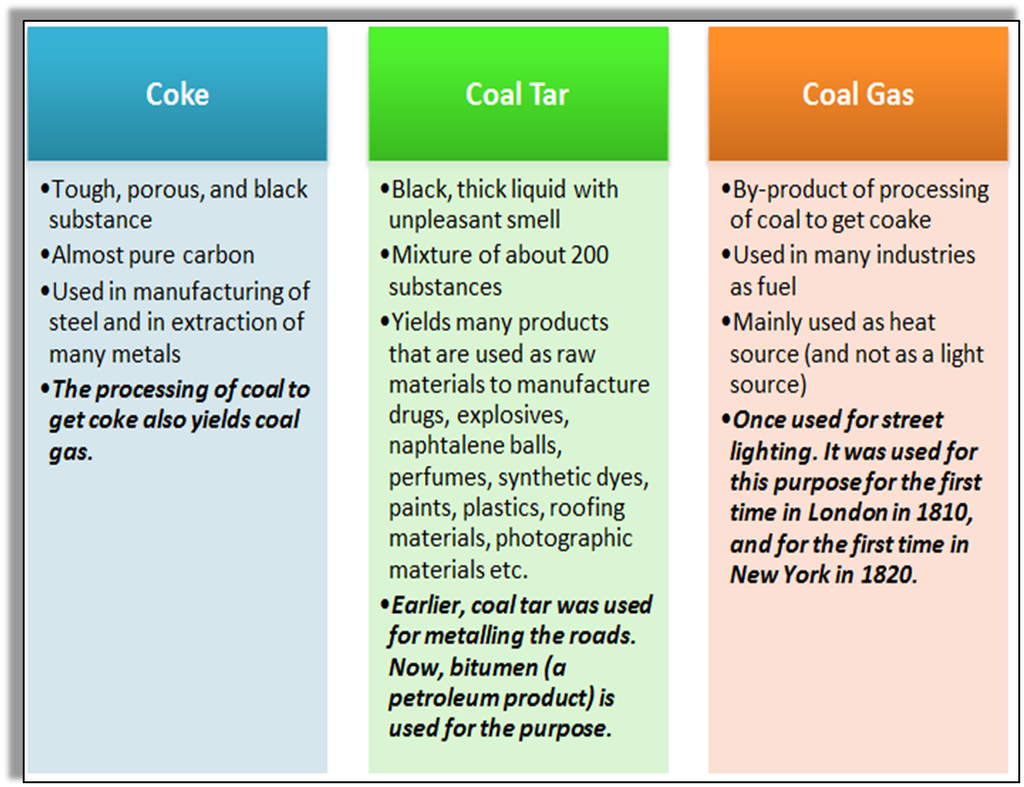
What are hydrocarbons?
Hydrocarbons are substances that consist of only carbon and hydrogen. Compounds like methane, butane, and hexane are hydrocarbons that are produced on burning of the fossil fuels.
What will happen if the coal reserves get depleted?
- Coal is being used as a major source of energy in industries as well as rural areas.
- Not only this, it serves various other purposes like the synthesis of synthetic oil, natural gas, coke, coal tar and coal gas.
- If the amount of coal gets depleted, it would become much more difficult for us to produce energy for various purposes. Hence, we must use coal in an efficient way.
What substances are released on the burning of coal?
- Carbon dioxide
- Carbon monoxide
- Sulphur Dioxide
- Nitrogen
- Lead
- Arsenic
- Mercury
Coal
Coal is a stone-like material that is black in color. It is also known as fossil fuel as it is produced by the decomposition of buried dead organisms. When burnt in air, it produces carbon dioxide. Some of the uses of coal are:
▪ As a fuel.
▪ To produce electricity in thermal power stations.
▪ Earlier, it was used to run the steam engine.
Formation of Coal
Coal is formed when dead plant matter decays into peat and is converted into coal by the heat and pressure of deep burial over millions of years.

 PathSet Publications
PathSet Publications
